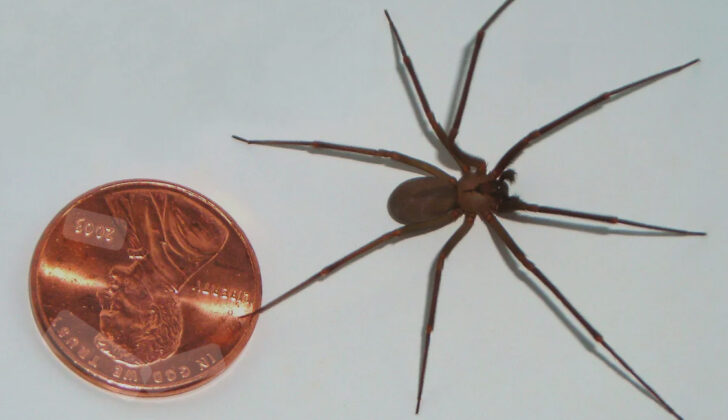Spiders are a common part of our environment, often hiding in quiet corners of the house, woodpiles, garages, or basements. Most of the time, they’re completely harmless—and they even help by eating other pests. But occasionally, spider bites can cause more than just a red bump.
While most spider bites cause only mild irritation, certain spiders—like the brown recluse—can lead to more serious complications such as necrotic wounds (tissue damage) or allergic reactions. This guide will help parents and caregivers understand what to look for, how to treat common spider bites, and when to seek medical care.
Common vs. Dangerous Spiders
Most spiders in the U.S. are not dangerous to humans. Their bites might cause redness, itching, or mild swelling—similar to a mosquito bite. However, a few species require closer attention:
Brown Recluse (Loxosceles reclusa)
-
Found mostly in the Midwest and Southern U.S.
-
Has a violin-shaped marking on its back
-
Prefers dark, quiet places like closets, attics, and sheds
-
Bites can cause necrotic skin wounds
Black Widow (Latrodectus mactans)
-
Recognized by its shiny black body and red hourglass on the abdomen
-
Found in warm, dry places such as garages, crawl spaces, and woodpiles
-
Bites may trigger muscle pain, cramps, or more severe systemic symptoms
This article focuses primarily on brown recluse bites, which can be deceptive—starting mild, but worsening over time.
What Does a Spider Bite Look Like?
Most Spider Bites:
-
Appear as small red bumps
-
May itch or feel slightly tender
-
Heal within a few days without medical attention
Brown Recluse Bites:
-
May not hurt right away
-
In 2–8 hours: Redness, mild swelling, and a blister or pustule may appear
-
In 24–72 hours: Skin may begin to break down, forming a necrotic ulcer (open sore)
-
Surrounding skin may turn purple, gray, or black
-
Symptoms may include fever, chills, fatigue, or body aches
Allergic Reactions to Spider Bites
Although rare, some children may have an allergic reaction to a spider bite. Signs of an allergic reaction include:
-
Hives or widespread rash
-
Swelling of the face or lips
-
Difficulty breathing or wheezing
-
Nausea or vomiting
-
Dizziness or fainting
Call 911 and use an epinephrine auto-injector if available if your child shows signs of anaphylaxis.
First Aid for Spider Bites
If your child is bitten by a spider—especially if you’re not sure what type it was—follow these steps:
-
Clean the bite area with soap and water.
-
Apply a cool compress to reduce pain and swelling.
-
Elevate the affected limb, if possible.
-
Give acetaminophen or ibuprofen for pain (based on age/weight).
-
Watch for changes over the next 24–72 hours.
If symptoms worsen—such as spreading redness, an open sore, or systemic symptoms—contact your pediatrician right away.
When to See a Doctor
Seek medical attention immediately if:
-
The bite develops into an open wound with black or dead tissue
-
There’s pus, streaking redness, or signs of infection
-
Your child has a fever, chills, or nausea
-
The bite area is growing larger or more painful
-
You suspect the bite was from a brown recluse or black widow
In some cases, treatment may include antibiotics, wound care, or even minor surgery to remove dead tissue.
Prevention: Keeping Spiders Away
You can greatly reduce the chances of spider bites by taking a few simple steps at home and outdoors:
Inside the Home:
-
Shake out clothing, towels, and shoes before use—especially if stored in dark places
-
Keep closets, basements, and attics clean and clutter-free
-
Seal cracks and gaps around windows and doors
-
Store shoes and boots up off the floor
Outdoors:
-
Wear long sleeves and gloves when gardening or cleaning sheds
-
Avoid stacking firewood or outdoor toys near the house
-
Teach children not to reach blindly into boxes, piles, or dark corners
Educate Your Kids
-
Teach your child to tell an adult right away if they think they’ve been bitten by a spider.
-
Remind them not to touch or disturb spiders they find.
-
Show them safe ways to shake out clothing or towels in spider-prone areas.
Can You Get Tested for Spider Bite Allergies?
There is no specific allergy test for spider venom like there is for bees or wasps. If your child has had a strong reaction to a spider bite in the past, your doctor may refer you to an allergist to assess general allergic tendencies or provide an emergency plan.
Healing from Brown Recluse Bites
Most brown recluse bites do not become serious, and even necrotic ulcers can heal with time. However, healing may take weeks to months, depending on the size and depth of the wound.
Care often involves:
-
Wound cleaning and dressing changes
-
Antibiotics (if infection occurs)
-
Pain management
-
Regular doctor check-ups
Avoid home remedies that involve cutting the wound or applying chemicals—these can worsen the injury.
Final Thoughts
The good news is that serious spider bites are rare, and most heal without complications. By understanding the risks, recognizing early signs, and knowing when to call the doctor, you can keep your child safe and healthy.
Remember: not every red bump is dangerous—but trust your instincts. If something doesn’t look right, it’s always okay to ask your pediatrician.












